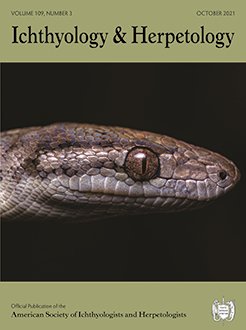Squamate reptiles rely on the vomeronasal organ for chemoperception of their environment. This organ functionally associates with several structures, such as the nasolacrimal duct and choanal groove, which are morphologically diverse among species. In this study, we investigated the morphological characteristics and embryogenesis of the vomeronasal organ and its associated structures in the Japanese Grass Lizard (Takydromus tachydromoides). Separation of the complex of the nasolacrimal duct from the vomeronasal organ was observed in this species, a characteristic morphological feature among squamates. Additionally, we integrated the morphological characteristics of the vomeronasal organ and associated structures among squamates, focusing on topological relationships among the structures. The parsimony and likelihood methods for ancestral state reconstruction suggested the parallelism of several morphological characteristics during the evolutionary history of squamates: loss or reduction of the choanal groove, fusion between the nasolacrimal duct and choanal groove, and separation of the nasolacrimal duct from the vomeronasal organ.
How to translate text using browser tools
20 August 2021
Morphological Characteristics and Embryogenesis of the Vomeronasal Organ and Associated Structures in the Japanese Grass Lizard, Takydromus tachydromoides (Squamata: Lacertoidea: Lacertidae)
Kentaro Okuyama,
Takeshi Sasaki
ACCESS THE FULL ARTICLE

Ichthyology & Herpetology
Vol. 109 • No. 3
October 2021
Vol. 109 • No. 3
October 2021




